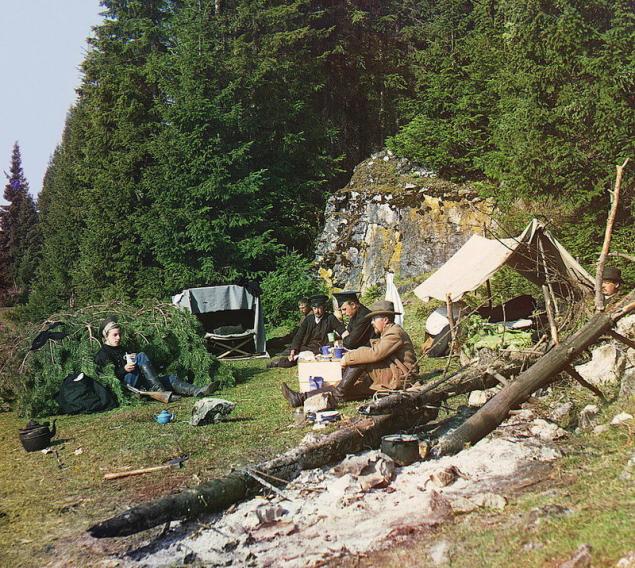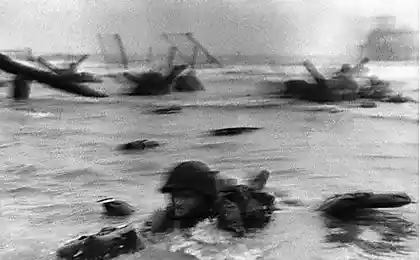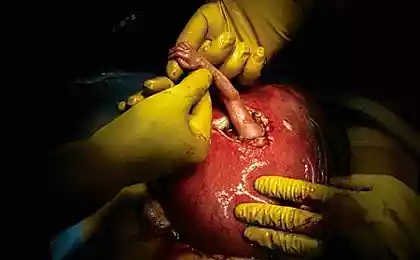514
Rare color photographs of the Russian Empire in the early 20th century
The cycle of color photographs taken in the distant 1911. Where a hundred years ago came from the color? How was it done?
Only recently 50-60 years ago color photography was not that exotic, but extremely rare. Even in my memory pseudo colored painted pictures.

A talented chemist, a keen photographer, a graduate of the Petersburg Institute of technology, Prokudin-Gorsky to 1906, publishes a series of articles on principles of color photography. During this period, he perfected a new method, providing the same svetochuvstvitelen the entire spectrum that could do color images, suitable for projection. Then he develops and his method of transferring a color image based on the separation of colors into three components. He removed the objects 3 times through 3 filters — red, green and blue. Was 3 black-and-white positive plate.

To play back the image he used three-piece projector with blue, red and green. All three images from three of the plates were projected onto the screen simultaneously, causing the audience had the opportunity to see a full-color image. Being by 1909, already a well known photographer and editor of the magazine "Amateur Photographer", Sergei Mikhailovich received the opportunity to realize his dream — to make a photo chronicle of the Russian Empire.
On the recommendation of the Grand Duke Michael he outlines his plan to Emperor Nicholas II and received enthusiastic support. Over the next few years, the government allocated Prokudin-Gorsky specially equipped railroad car for travel with the purpose of photographic documentation of life in the Empire.
During this work it has been shot a few thousand plates. The technology of displaying colors on screen.

And most importantly — created a gallery of beautiful photographs of unprecedented quality and volume. And for the first time this series of images was decomposed into color. Then only to conclusion by projecting to the screen.
Fancy and fate of these photographic plates. Prokudin-Gorsky was able after the death of Nicholas II to travel first to Scandinavia, then to Paris, taking with him almost all the results of years of work — a glass plate in 20 boxes.
"In the 1920-ies, Prokudin-Gorsky lived in nice and the local Russian community got a valuable opportunity to view his paintings in the form of color slides. Sergei Mikhailovich was proud that his work helped the young Russian generation on foreign soil to understand and remember, looked like their lost homeland — in its most real form, preserving not only the color but also the spirit of it."

Collection plates survived, and many removals of the family of Prokudin-Gorsky, and the German occupation of Paris.
In the late 40-ies appeared, the question arose about the publication of the first "History of Russian art" under the General editorship of Igor Grabar. At the same time — about the possibility of supply of colour illustrations. And then I remembered the translator of this work, Princess Maria putiatin, that at the beginning of the century, her father-in-law, Prince Putyatin, presented to Tsar Nicholas II of a Professor Prokudin-Gorsky, who developed the method of color photography by the color separations. According to her, the sons of the professors lived by the exiles in Paris and were the custodians of the collection of images.

In 1948 the representative of the Rockefeller Foundation Marshall acquired from Prokudin-Gorsky about 1600 photographic plates for the sum of $ 5,000. Since the plates for many years was kept in the library of Congress.
Only recently someone came up with the idea to try to scan and combine 3-plate photographs of Prokudin — Gorsky on the computer. Happened almost a miracle — it seemed, forever lost images come to life."
P. S. And remember, just changing your mind — together we change the world! ©
Join us in Facebook , Vkontakte, Odnoklassniki
Source: cont.ws/post/108394?_utl_t=fb
Only recently 50-60 years ago color photography was not that exotic, but extremely rare. Even in my memory pseudo colored painted pictures.

A talented chemist, a keen photographer, a graduate of the Petersburg Institute of technology, Prokudin-Gorsky to 1906, publishes a series of articles on principles of color photography. During this period, he perfected a new method, providing the same svetochuvstvitelen the entire spectrum that could do color images, suitable for projection. Then he develops and his method of transferring a color image based on the separation of colors into three components. He removed the objects 3 times through 3 filters — red, green and blue. Was 3 black-and-white positive plate.

To play back the image he used three-piece projector with blue, red and green. All three images from three of the plates were projected onto the screen simultaneously, causing the audience had the opportunity to see a full-color image. Being by 1909, already a well known photographer and editor of the magazine "Amateur Photographer", Sergei Mikhailovich received the opportunity to realize his dream — to make a photo chronicle of the Russian Empire.
On the recommendation of the Grand Duke Michael he outlines his plan to Emperor Nicholas II and received enthusiastic support. Over the next few years, the government allocated Prokudin-Gorsky specially equipped railroad car for travel with the purpose of photographic documentation of life in the Empire.
During this work it has been shot a few thousand plates. The technology of displaying colors on screen.

And most importantly — created a gallery of beautiful photographs of unprecedented quality and volume. And for the first time this series of images was decomposed into color. Then only to conclusion by projecting to the screen.
Fancy and fate of these photographic plates. Prokudin-Gorsky was able after the death of Nicholas II to travel first to Scandinavia, then to Paris, taking with him almost all the results of years of work — a glass plate in 20 boxes.
"In the 1920-ies, Prokudin-Gorsky lived in nice and the local Russian community got a valuable opportunity to view his paintings in the form of color slides. Sergei Mikhailovich was proud that his work helped the young Russian generation on foreign soil to understand and remember, looked like their lost homeland — in its most real form, preserving not only the color but also the spirit of it."

Collection plates survived, and many removals of the family of Prokudin-Gorsky, and the German occupation of Paris.
In the late 40-ies appeared, the question arose about the publication of the first "History of Russian art" under the General editorship of Igor Grabar. At the same time — about the possibility of supply of colour illustrations. And then I remembered the translator of this work, Princess Maria putiatin, that at the beginning of the century, her father-in-law, Prince Putyatin, presented to Tsar Nicholas II of a Professor Prokudin-Gorsky, who developed the method of color photography by the color separations. According to her, the sons of the professors lived by the exiles in Paris and were the custodians of the collection of images.

In 1948 the representative of the Rockefeller Foundation Marshall acquired from Prokudin-Gorsky about 1600 photographic plates for the sum of $ 5,000. Since the plates for many years was kept in the library of Congress.
Only recently someone came up with the idea to try to scan and combine 3-plate photographs of Prokudin — Gorsky on the computer. Happened almost a miracle — it seemed, forever lost images come to life."
P. S. And remember, just changing your mind — together we change the world! ©
Join us in Facebook , Vkontakte, Odnoklassniki
Source: cont.ws/post/108394?_utl_t=fb
Famous global brands that collaborated with fascists
Cozy little house – country classics for the whole year






















